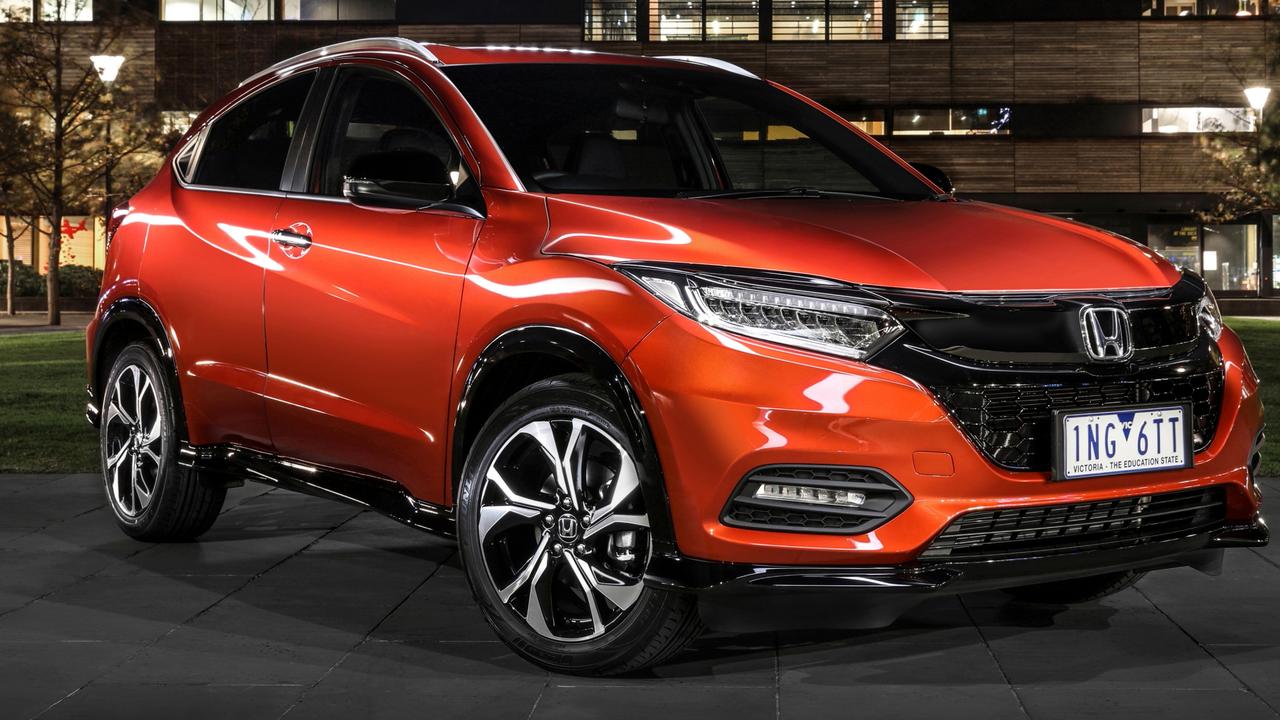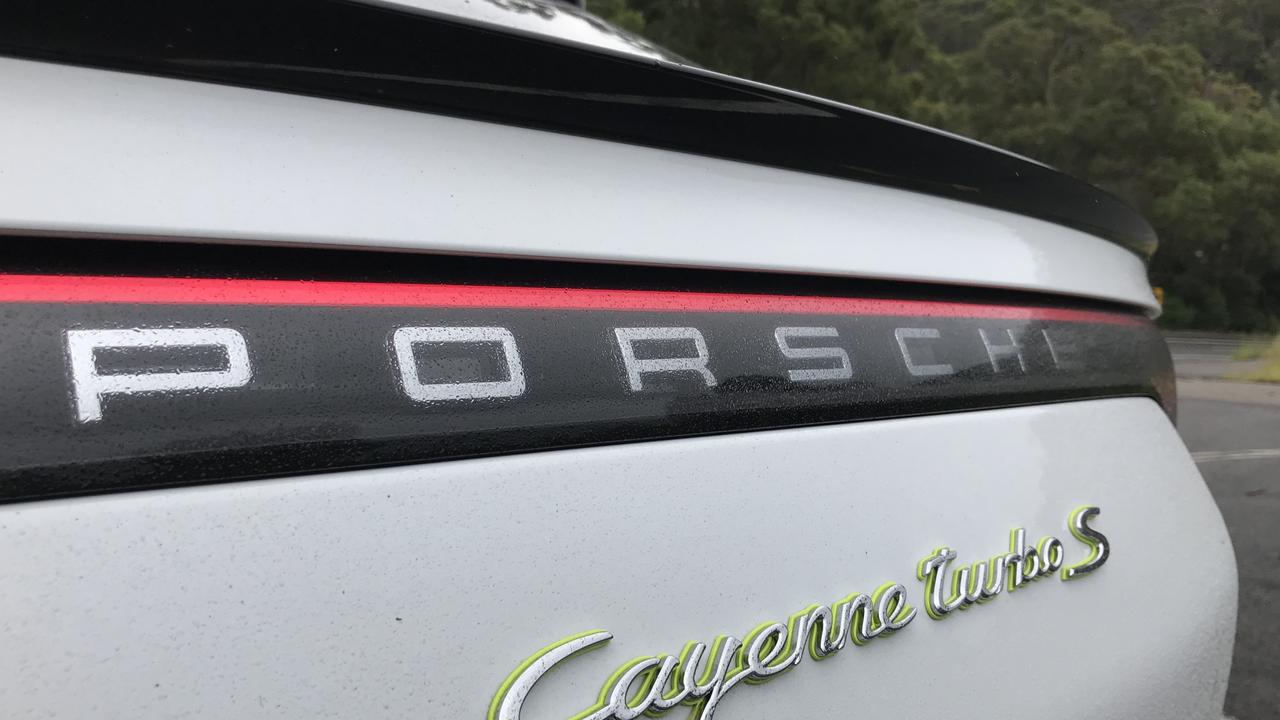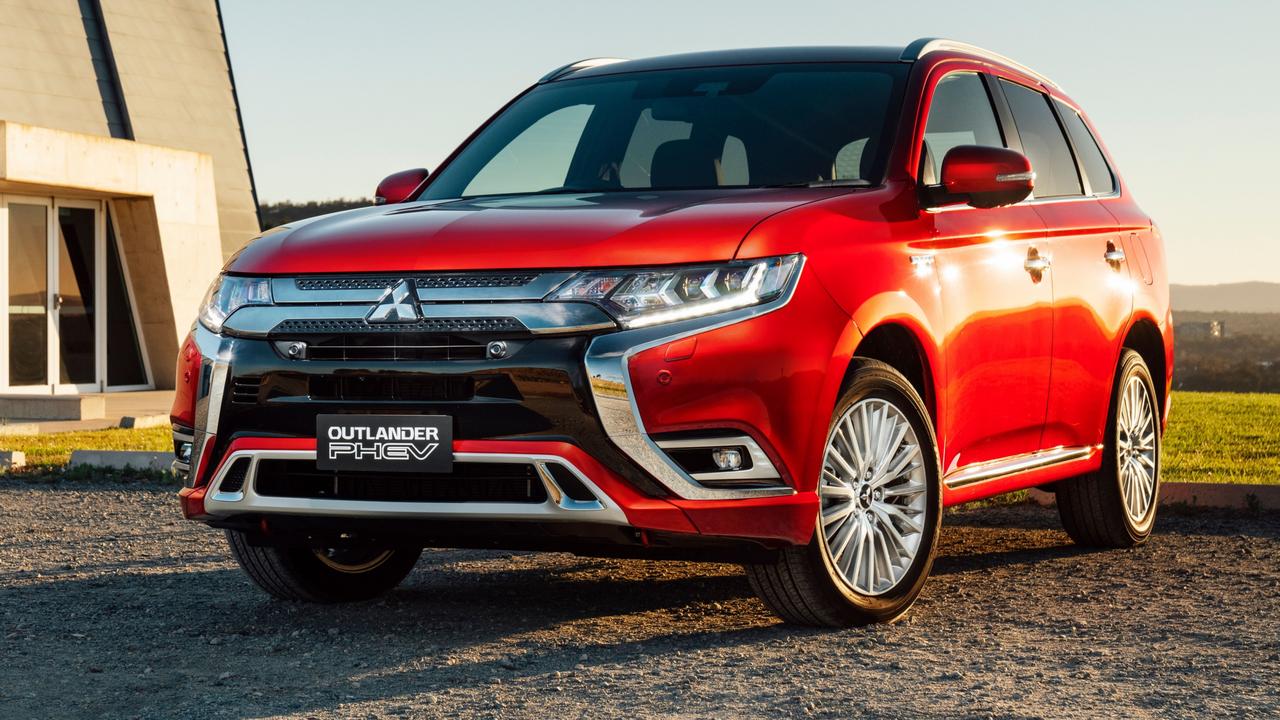Honda Civic RS hatch review: Not too hot, but not too cold
The Japanese brand has a history of producing sporty, fun hatches. And Honda’s latest example will have broader appeal.
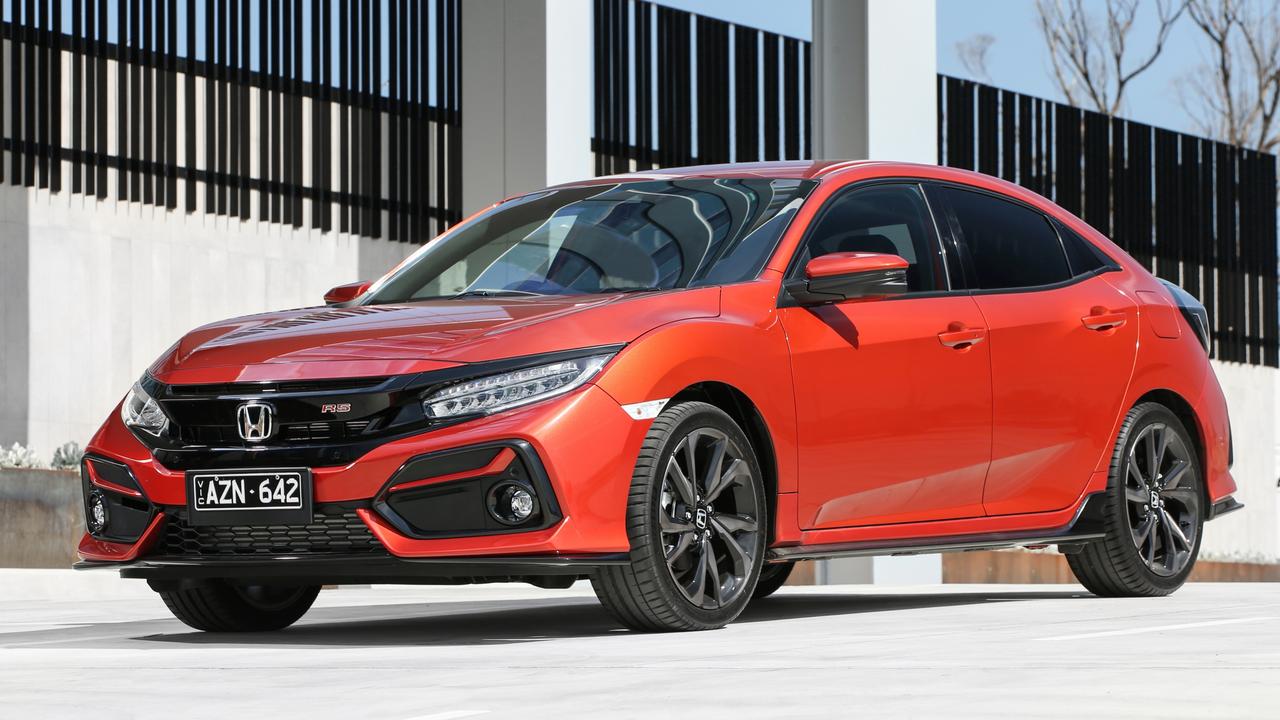
Australians have a huge appetite for sports and performance cars and brands are cashing in by offering Goldilocks hatches — not too hot, but not too cold. They have more power and sportier styling than the basic models, slotting in underneath the fully-fledged hot hatches. Honda’s answer is the Civic RS.
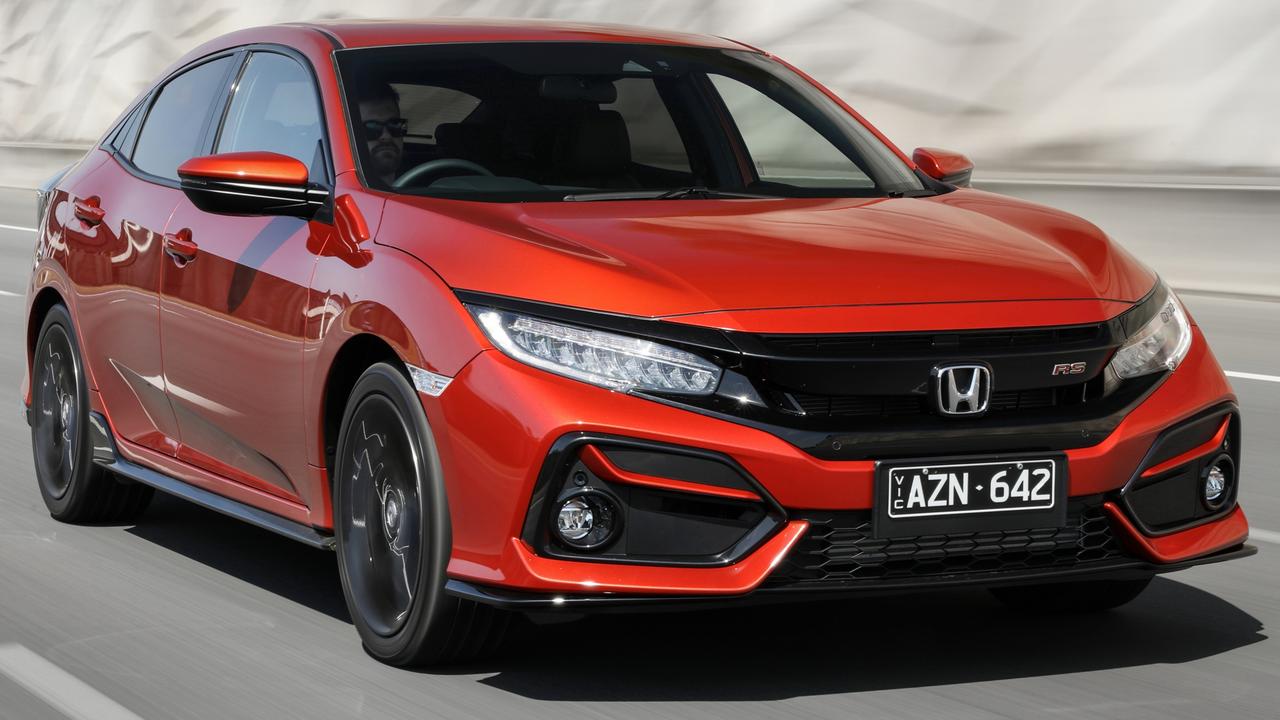
VALUE
The Civic RS hatch sits below the equipment-laden VTi-LX in the brand’s five car line-up. Priced from about $37,200 drive-away, the RS is a $5500 step up over the VTi-L. It’s easy to see where your money is being spent: there are sporty touches such as leather accented seats with contrast red stitching, alloy sports pedals, a dual central exhaust, front and rear spoilers, LED headlights and a booming 452W 12-speaker stereo with subwoofer. The RS is covered by Honda’s five-year unlimited kilometre warranty, but the brand has increased this to seven years with free roadside assistance for cars delivered before June 30. Service intervals are shorter than most competitors at 10,000km or 12 months. Capped price servicing will cost you $1485 over five years.
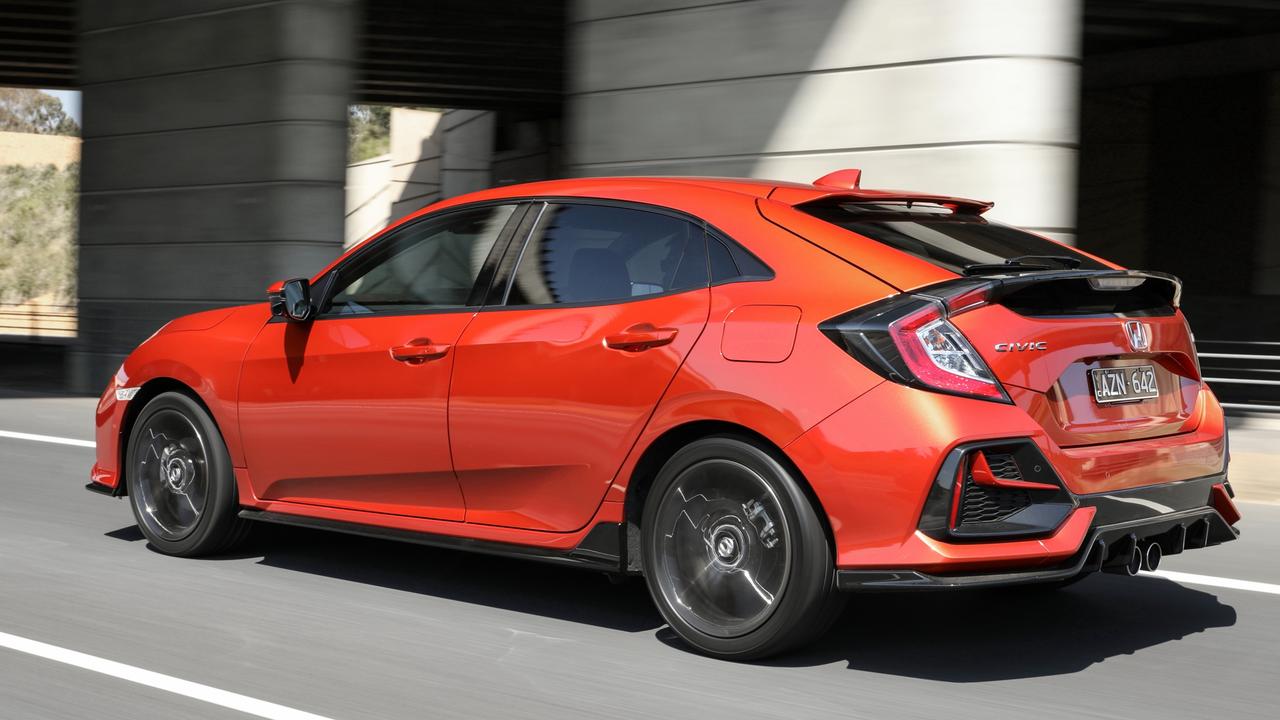
COMFORT
The Civic RS’s interior is a mixed bag, with a mix of hard and soft-touch surfaces. A huge centre console bin can swallow whatever you throw at it, while a shelf allows you to store your phone and cables out of sight. The seven-inch touchscreen is a decent size and comes with Apple CarPlay/Android Auto and digital radio but no satnav. Honda’s infotainment software isn’t the most intuitive and the screen can be a bit fiddly to use. The seating position is low and snug, just what you want in a sporty hatch. Heated front seats are a tad firm, but the suspension soaks up bumps and lumps well. Road noise is tolerable at normal speeds, but intrusive when you hit the motorway. Back seats are roomy and can easily accommodate a couple of adults in comfort. The RS has below average boot space — it loses 74L compared to the regular Civic variants — and it has a space saver spare.
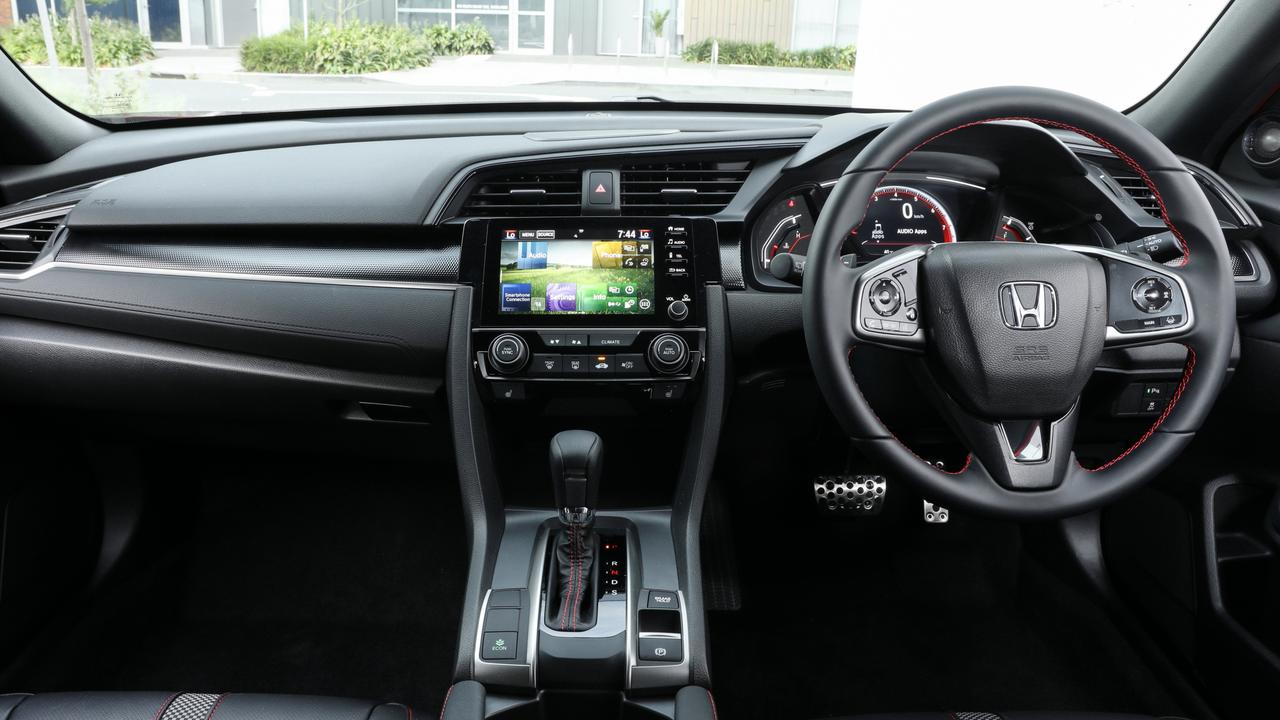
SAFETY
Honda got a five-star ANCAP crash test score back in 2017, but since then the Civic has received some much needed safety tech upgrades. The RS comes standard with auto emergency braking but no pedestrian or cyclist detection, lane departure warning, lane-keep assist and adaptive cruise. There is also Honda’s LaneWatch feature which displays footage from side cameras onto the central display when the indicator is engaged.
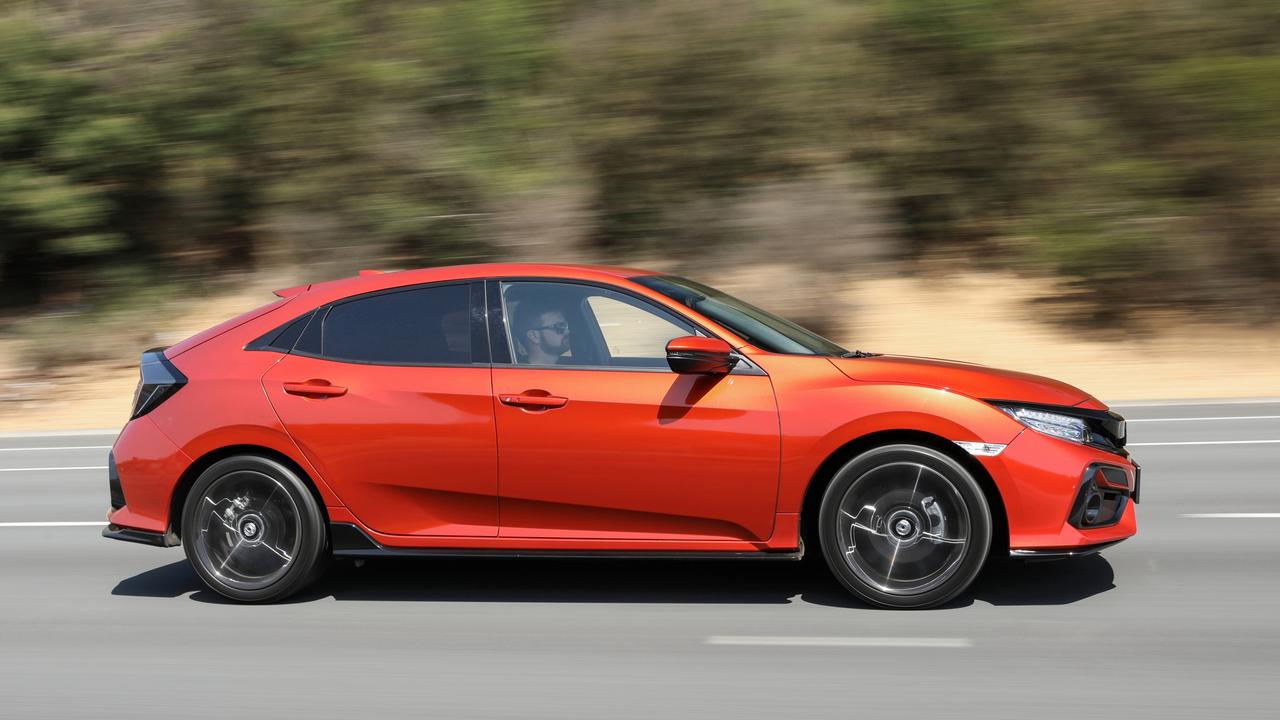
DRIVING
The Honda’s 1.5-litre turbo engine makes 127kW and 220Nm and takes regular unleaded. There is enough grunt to get your heart pumping but the CVT auto takes some time to find the engine’s sweet spot — there’s no initial shove when you hit the accelerator. The RS has excellent grip and poise through the corners, while sharp, direct steering adds to driver enjoyment. Fuel use is excellent at a claimed 6.4L/100km. We achieved about 7L/100km during our test in a mix of conditions.
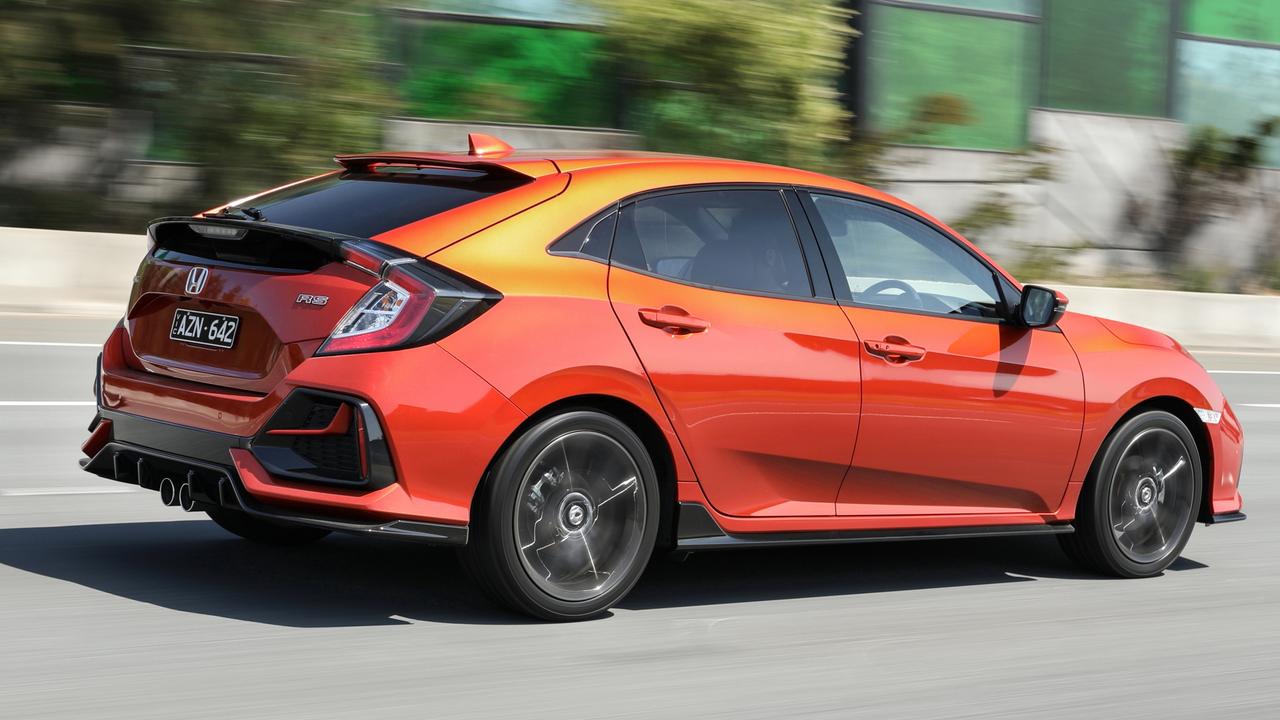
VERDICT 3.5/5
The RS hatch is fun to drive on a twisting road and easy to live with in traffic, but it would benefit from a dual-clutch auto.
ALTERNATIVES
Kia Cerato GT from 33,990 drive-away (special offer)
The Kia is cheaper and better equipped, but has a firm and at times uncomfortable ride.
Ford Focus ST-Line, from about $32,800 drive-away
Cheaper and boasts a punchy three-cylinder engine combined with an quick-shifting dual-clutch auto. Not as well equipped, though.
Hyundai i30 N-Line Premium, from about $39,500 drive-away
More expensive but with everything thrown in. Has the same powerful four-cylinder engine as the Kia matched to a seven-speed dual-clutch auto.
HONDA CIVIC RS VITALS
Price: About $37,200 drive-away
Warranty/servicing: 5 years, unl’td km, $1485 for 5 years
Engine: 1.5-litre 4cyl turbocharged petrol, 127kW/220Nm
Safety: Five stars, six airbags, auto emergency braking, lane-keep assist, lane departure warning, radar cruise control
Thirst: 6.4L/100km
Boot: 340L


